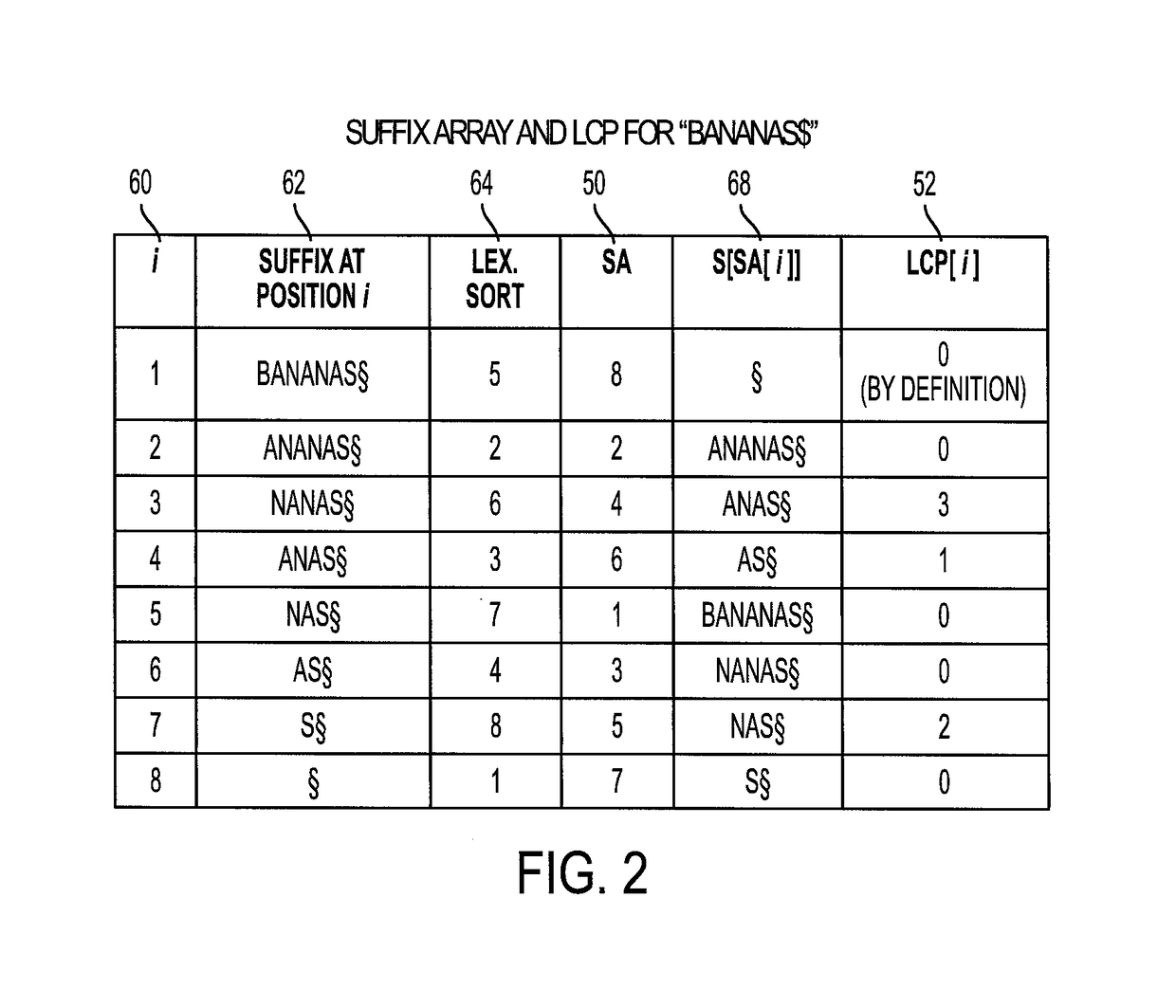Identifying repeat subsequences by left and right contexts
a technology of repeat subsequences and contexts, applied in the field of identifying repeat subsequences by left and right contexts, can solve the problems of relying on computationally expensive algorithms to detect constituents, methods that do not consider the context in which the sequence appears, and cannot be used in sequence identification
- Summary
- Abstract
- Description
- Claims
- Application Information
AI Technical Summary
Benefits of technology
Problems solved by technology
Method used
Image
Examples
example
[0129]The Penntree-bank collection, a collection of parsed English sentences, was used to test the capacity of x, y-LRCD repeats to capture semantic blocks. In the collection, each sentence is annotated with parentheses which denote the phrase-structure of the sentence (how the underlying constituent grammar generated it). The sentences were also part of speech (POS) tagged with 36 different POS-tags. Parentheses spanning single words and whole sentences were filtered out, leaving 697,080 constituents, corresponding to 325,069 different strings. Of these, only 17% are repeated substrings but they make up 61% of the total constituents.
[0130]Because the goal is not to decide at which positions a substring becomes a constituent, but rather if a substring is used or not as constituent or not, a modified version of the F1 measure was used to compensate for the fact that some substrings appear very often. The percentage of retrieved substrings that are used at least once as constituents w...
PUM
 Login to View More
Login to View More Abstract
Description
Claims
Application Information
 Login to View More
Login to View More - R&D
- Intellectual Property
- Life Sciences
- Materials
- Tech Scout
- Unparalleled Data Quality
- Higher Quality Content
- 60% Fewer Hallucinations
Browse by: Latest US Patents, China's latest patents, Technical Efficacy Thesaurus, Application Domain, Technology Topic, Popular Technical Reports.
© 2025 PatSnap. All rights reserved.Legal|Privacy policy|Modern Slavery Act Transparency Statement|Sitemap|About US| Contact US: help@patsnap.com



